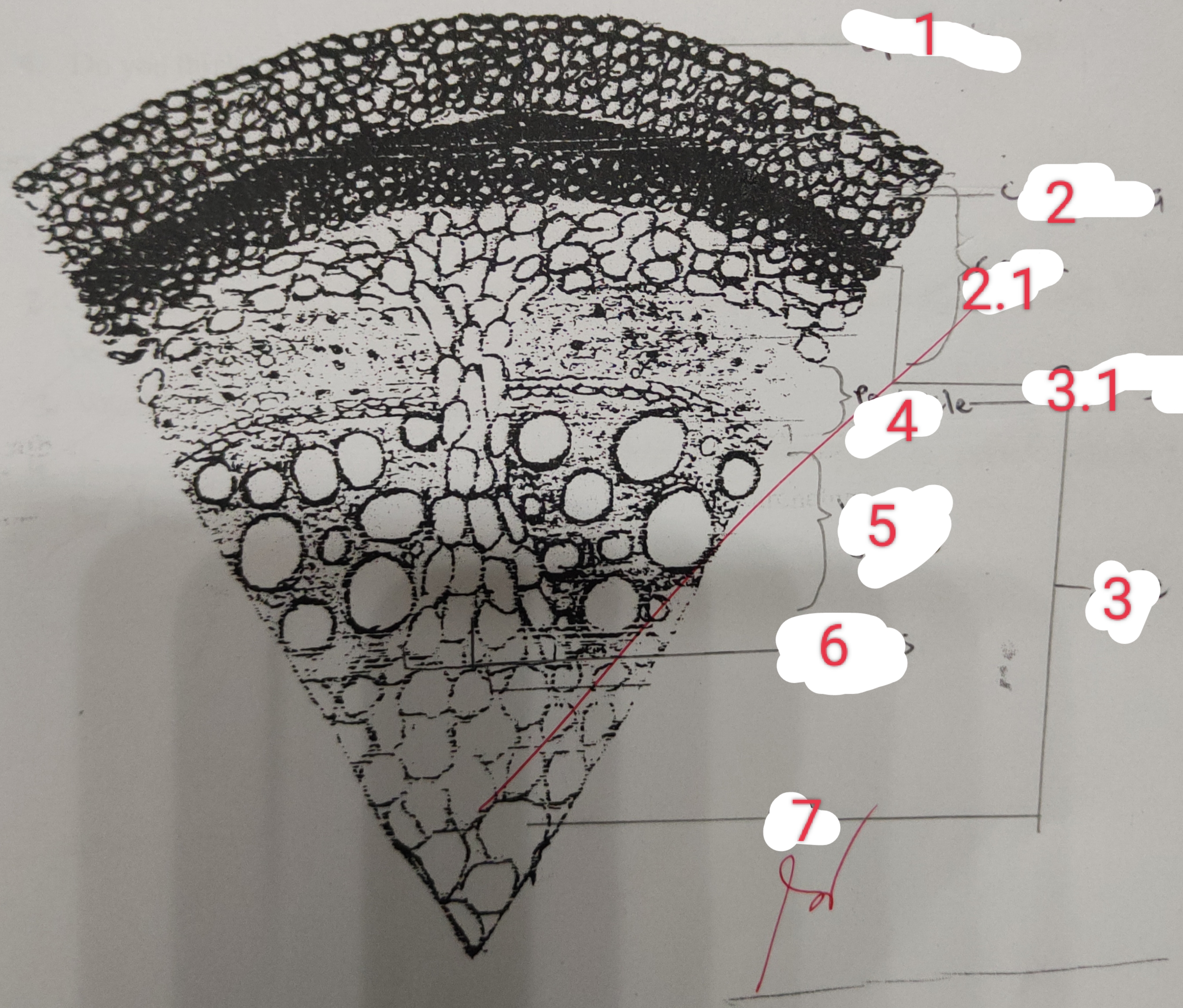EXERCISE 21: THE INTERNAL STRUCTURE OF A YOUNG DICOT STEM
1/22
There's no tags or description
Looks like no tags are added yet.
Name | Mastery | Learn | Test | Matching | Spaced |
|---|
No study sessions yet.
23 Terms
Young stems of dicotyledonous Plants
This exhibits structural differences when compared to portions of the same stems or other similar stems that have matured
cross section of Aristolochia elegans
What specimen was prepared for Exercise 21: The internal structure of a young dicot stem
Epidermis, Cortex, Stele, Pericycle, Vascular bundles, Pith rays, Pith
Under the LPO, what are the layers of the cell that should be identified? Starting from the outermost toward the center of the cross-section
Epidermis
This focuses on the outermost part of the specimen. Few trichomes may be seen here. Guard cells may also be seen though rarely
Cortex
Focuses beneath the epidermal cells.
Collenchyma, Parenchyma
What are the two cells found in cortex?
Collenchyma
These cells are outer in the cortex
Parenchyma
These cells are inner in the cortex
Starch sheath
This may be present in the cortex
Stele
This constitutes the rest of the specimen
Pericycle, Vascular bundles, Pith rays, Pith
The stele consists of?
Pericycle
Composed of parenchyma and sclerenchyma cells; the latter may be seen in isolated groups
Vascular bundles
These are seen in a broken ring in the young stem
Cambium
In vascular bundles, the phloem is outer to the xylem, in between is the?
HPO
Vascular bundles are better viewed under?
Pith rays
Parenchyma cells between bundles
Pith
Those bigger than parenchyma cells toward the center
Collenchyma, Sclerenchyma, Xylem, Phloem
Cells in the stem that lend mechanical support
Meristematic tissues
To what type of tissues do cambium cells belong to?
Vascular tissue system (Xylem)
What distinct region occupies the biggest portion of the stem cross section?
Encourages plant growth
Important function of cambium
Yes, presence of chloroplast
Are young stems capable of photosynthesis? Why?
